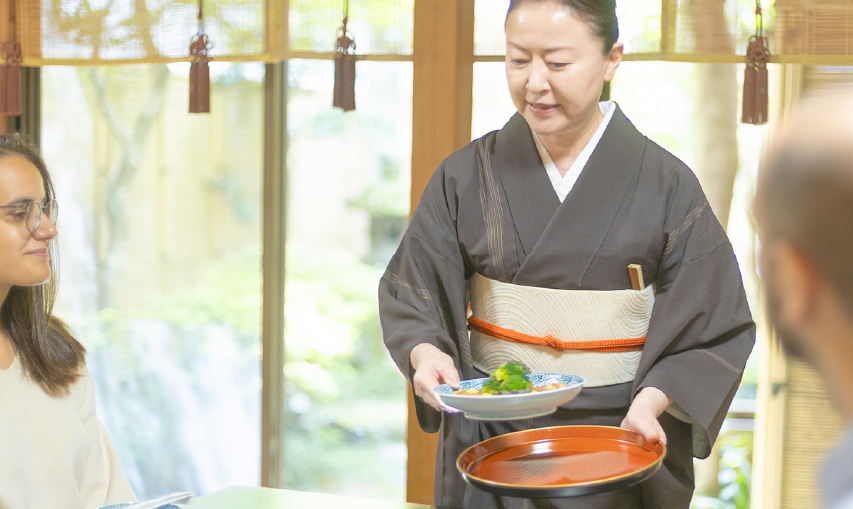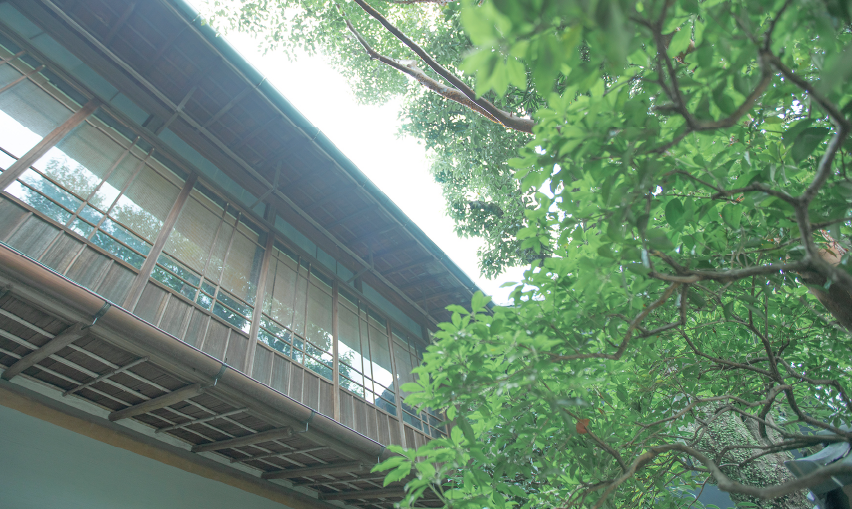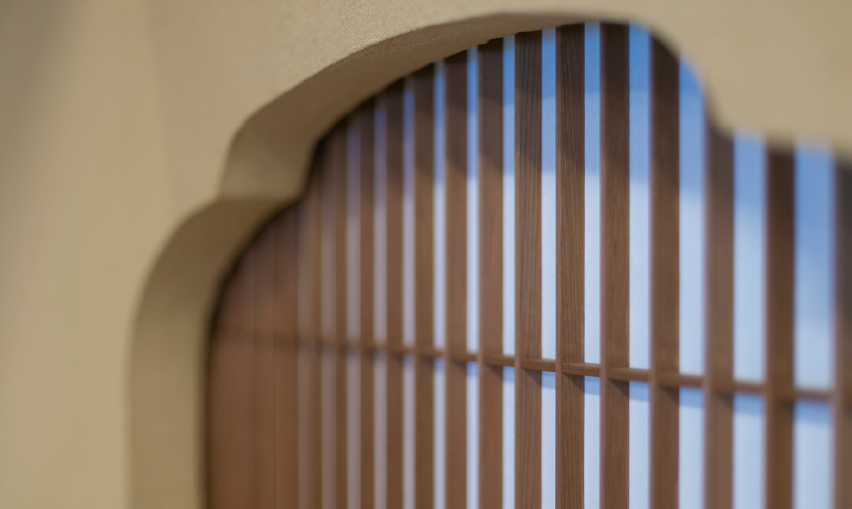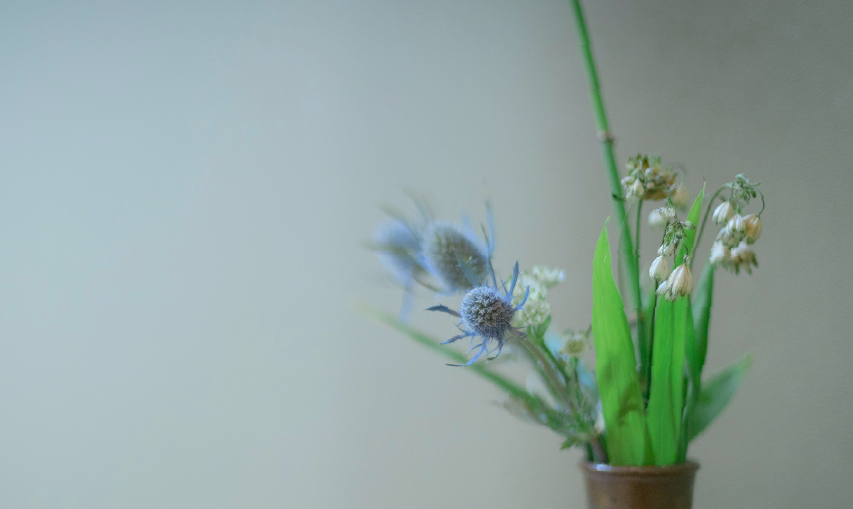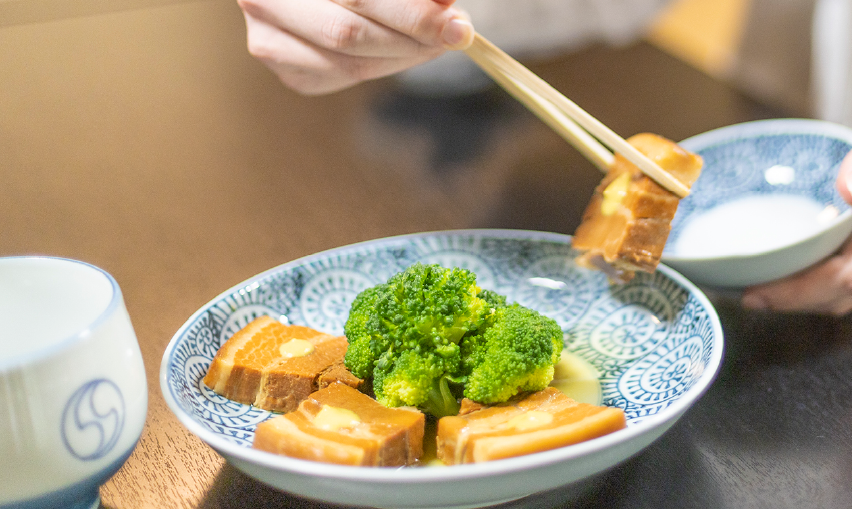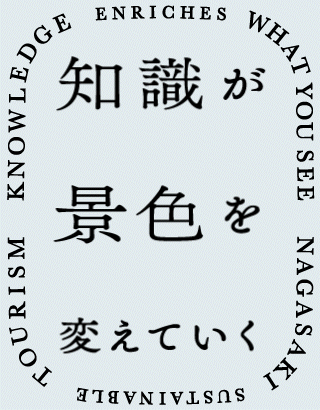



To inherit means to renew.
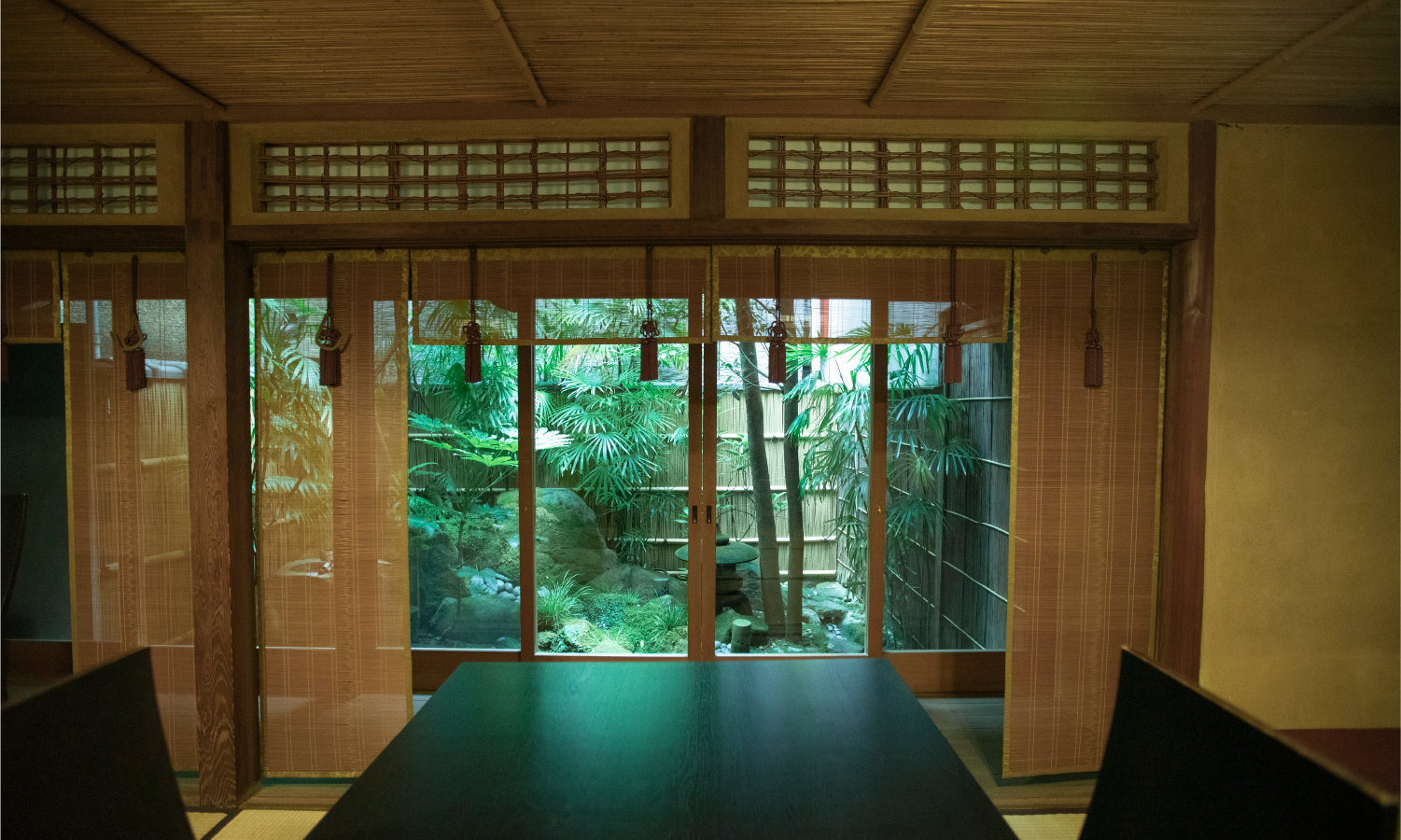
Taking in the view of the well-maintained garden.
Located in Ichiriki,
within the historic Teramachi district where temples
and shrines have stood since the 17th century, this area, established in 1813,
offers a unique cultural experience.
Guests have the opportunity to engage
with the proprietress, staff, and chefs
while enjoying traditional dance and music performances
by the geisha of Nagasaki Kenban.

The term shippoku in shippoku cuisine originates from the circular, red-lacquered low tables traditionally used in Japan. However, at Ichiriki, guests, including those from overseas, can enjoy their meals seated comfortably at tables and chairs, making the experience more accessible for everyone.
Until the Edo period, in Japan, each person was served their own individual meal on a tray. The head of the household would eat first, followed by the family members, and finally the servants. After Japan opened up to the world, the custom of gathering around a shared dining table, as seen in Western countries, was adopted along with Chinese and Western cuisines. The term taku refers to the dining table, while fuku refers to the cloth draped over the table. This led to the development of shippoku cuisine, where large platters of food were served in the centre for everyone to share.
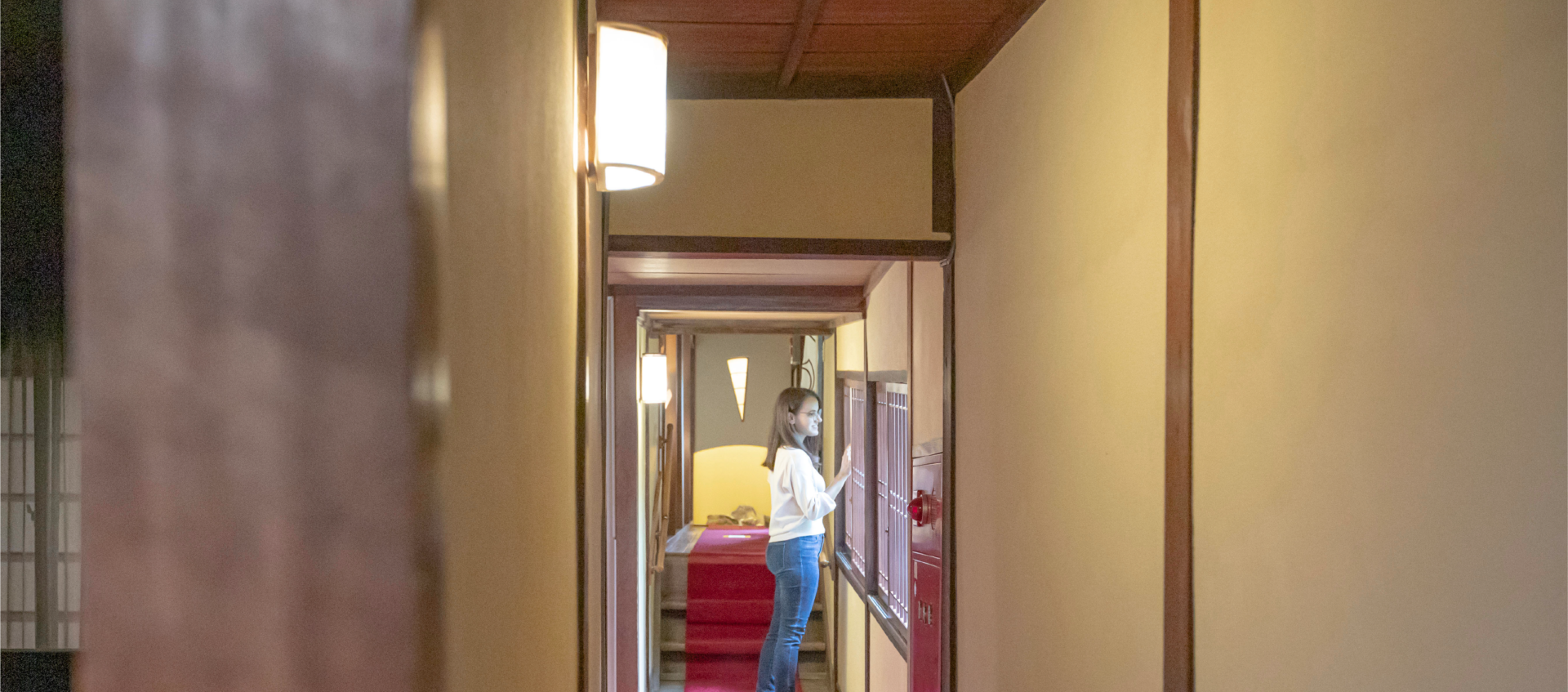
Ichiriki is the oldest restaurant in Nagasaki. It is where the unique Nagasaki-style shippoku cuisine was born. At a time when meat and oil-based dishes were rare in Japan, the opening of the port led to the introduction of Chinese and Western culinary influences, which contributed to the creation of this distinctive cuisine. At Ichiriki, guests can indulge in traditional shippoku dishes while enjoying the lively entertainment provided by the geisha of Nagasaki Kenban.
The number of traditional restaurants in Nagasaki that were once popular for entertaining during the thriving shipbuilding era has dwindled. Maintaining these valuable buildings and gardens is not only important for preserving history, but also for continuing the culture of hospitality, as seen in the seasonal changes of hanging scrolls used for celebrations, memorial services, and other occasions.
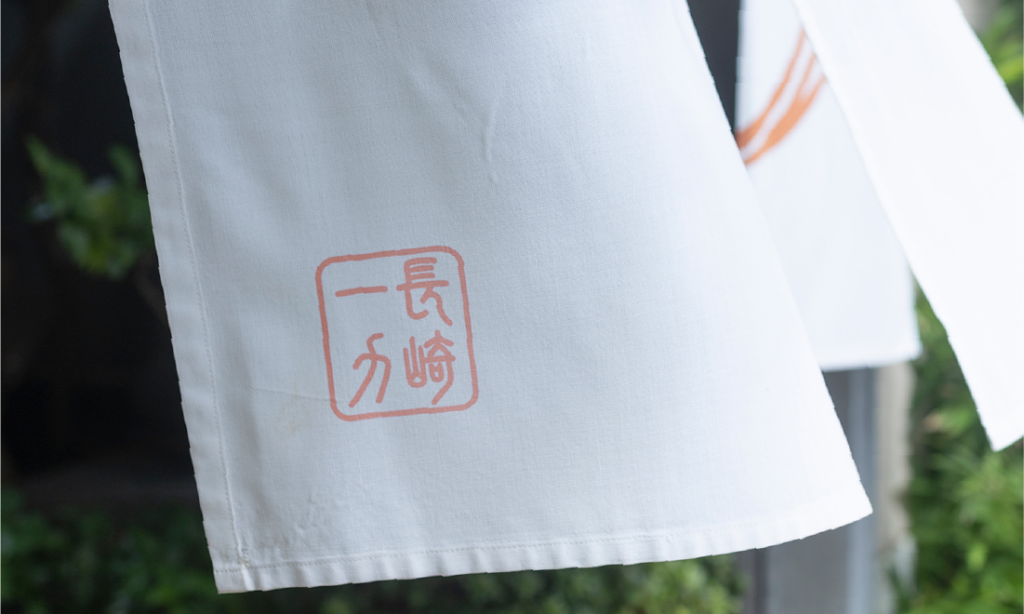
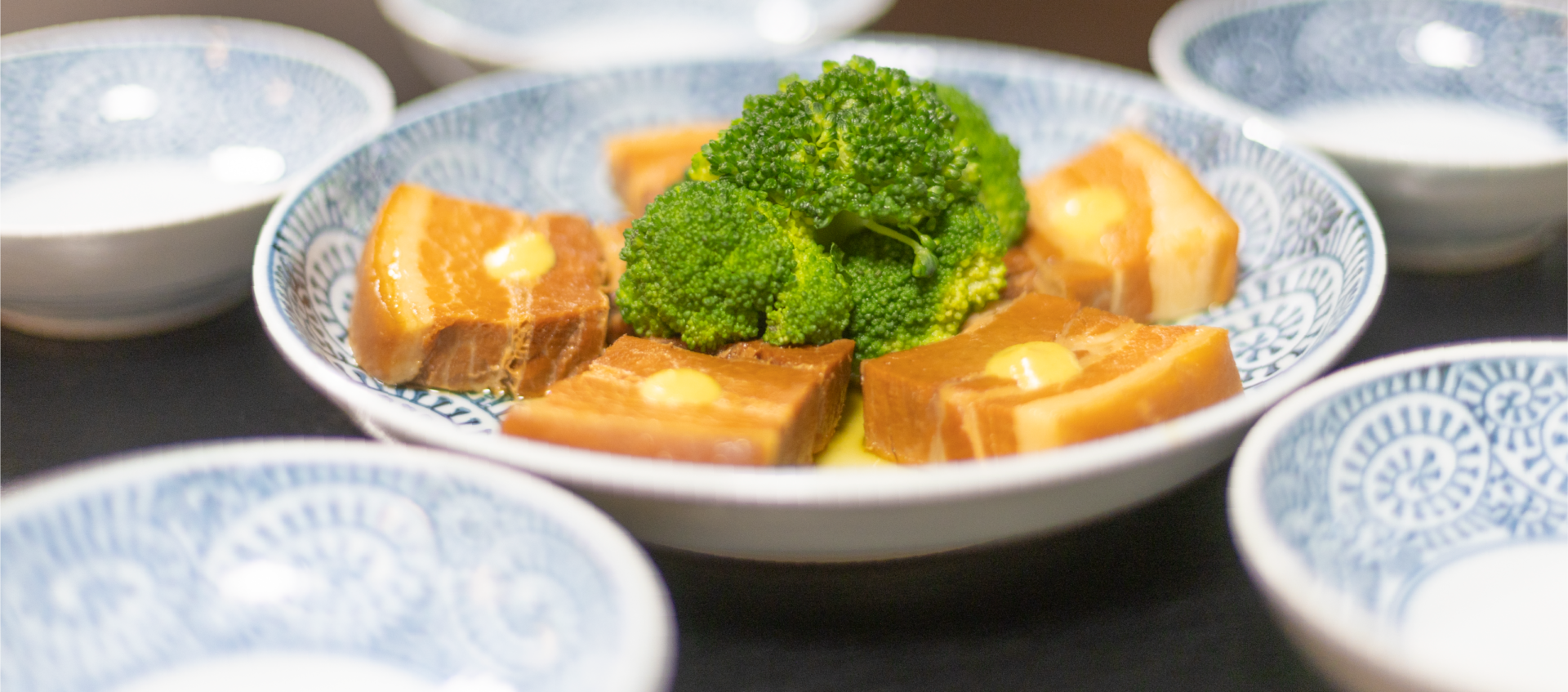 The 12 to 13 course meal offers a rich variety of Japanese, Western, and Chinese dishes.” class=”a-fadein”>
The 12 to 13 course meal offers a rich variety of Japanese, Western, and Chinese dishes.” class=”a-fadein”>
Sharing dishes from large platters while gathering around the table for a meal.
The 12 to 13 course meal offers a rich variety of Japanese, Western, and Chinese dishes.
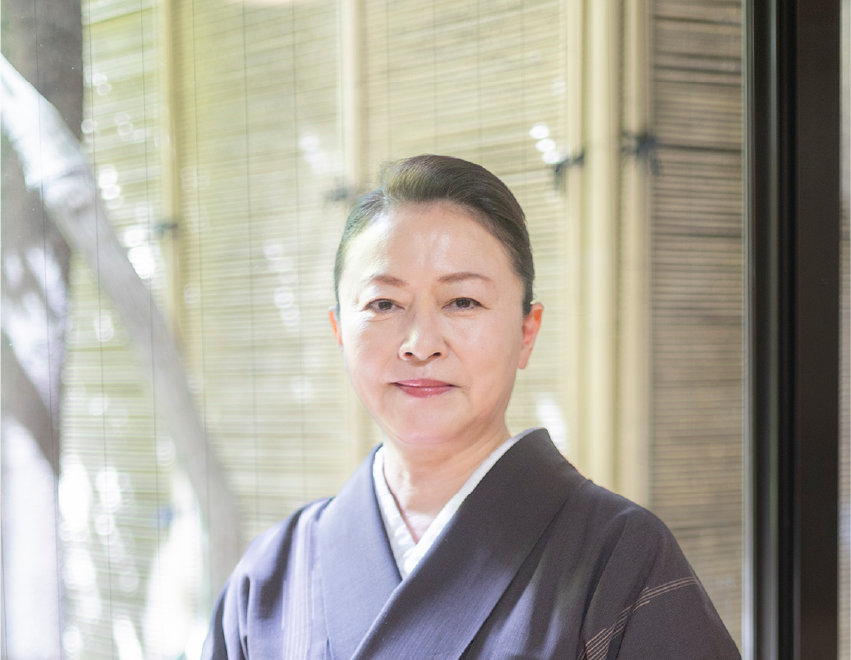
As the seventh-generation proprietress, she actively welcomes guests from abroad. In the traditional world of ryotei (Japanese inns), where even introducing chairs and tables that are easy to sit on faced opposition, she is constantly exploring how to adapt the ryotei to meet the needs of the times.
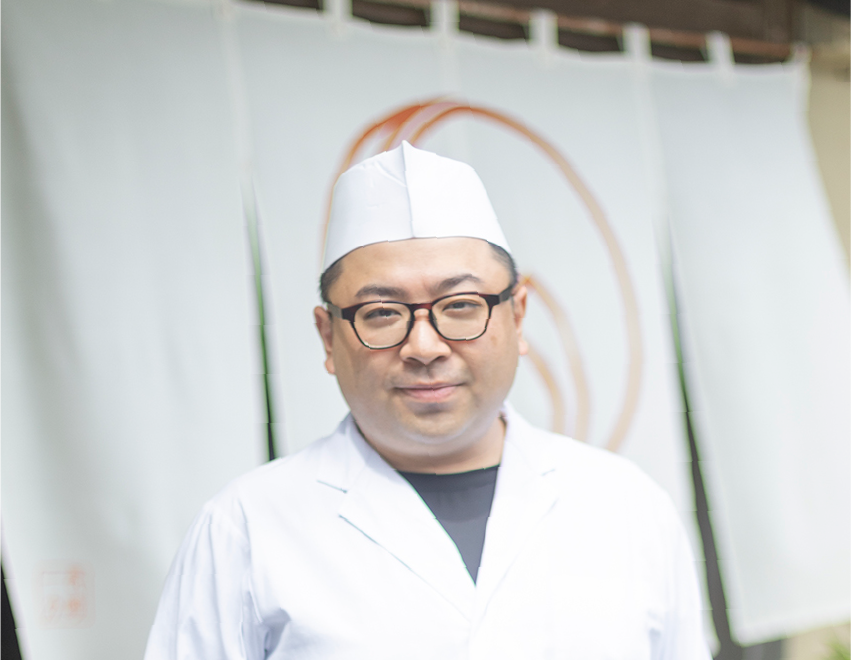
The second son of the proprietress, Taku Yamamoto is one of the three brothers responsible for the culinary direction of Ichiriki. After honing his skills at a prestigious ryotei in Fukuoka, he returned to the family business. Takashi is pioneering a fresh vision for the traditional ryotei, introducing vegetarian options and personally explaining the dishes to guests in their rooms. These are innovations rarely seen in the world of traditional Japanese fine dining.
The hanging scrolls are changed according to the occasion, such as celebrations or memorial services, as well as the changing seasons, reflecting the refined sense of hospitality.
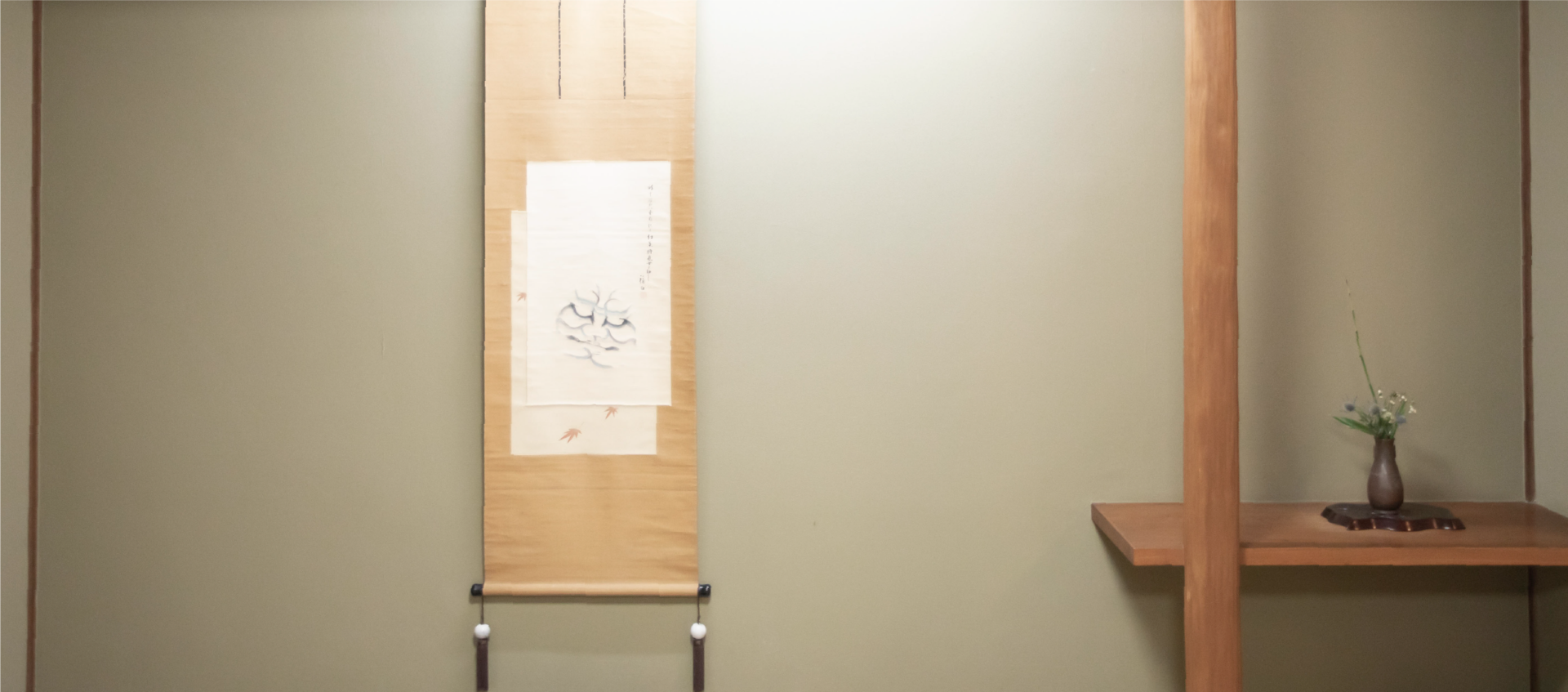
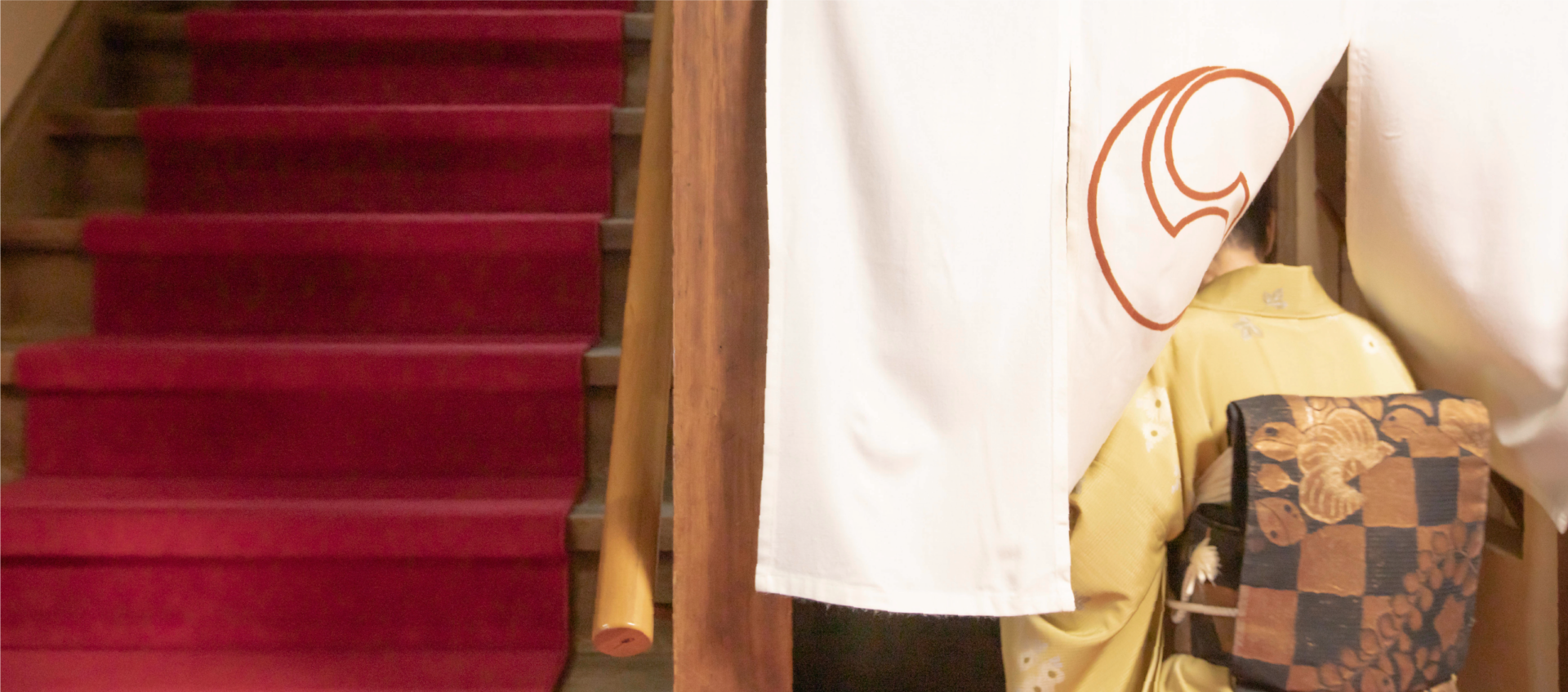
The first dish served is a clear soup known as hire (fin soup), which is prepared to ensure that guests do not drink alcohol on an empty stomach during a toast. Typically enjoyed warm before the toast or greeting, it is often served during celebrations or Buddhist ceremonies.
Derived from home-style cooking, shippoku cuisine follows the tradition of using just two small plates from start to finish. The meal concludes with oshiruko, a sweet red bean soup that serves as a digestif, reflecting its role in aiding digestion and providing a nourishing end to the meal.
The restaurant is also flexible in accommodating international guests. By gathering information in advance about dietary preferences such as vegetarian or vegan options, the team can tailor the menu accordingly, often finding inspiration for new dishes. Just as the history of shippoku cuisine evolved with changing influences, adapting to the needs of overseas guests allows this tradition to continue and thrive, ensuring it remains relevant while preserving its heritage.
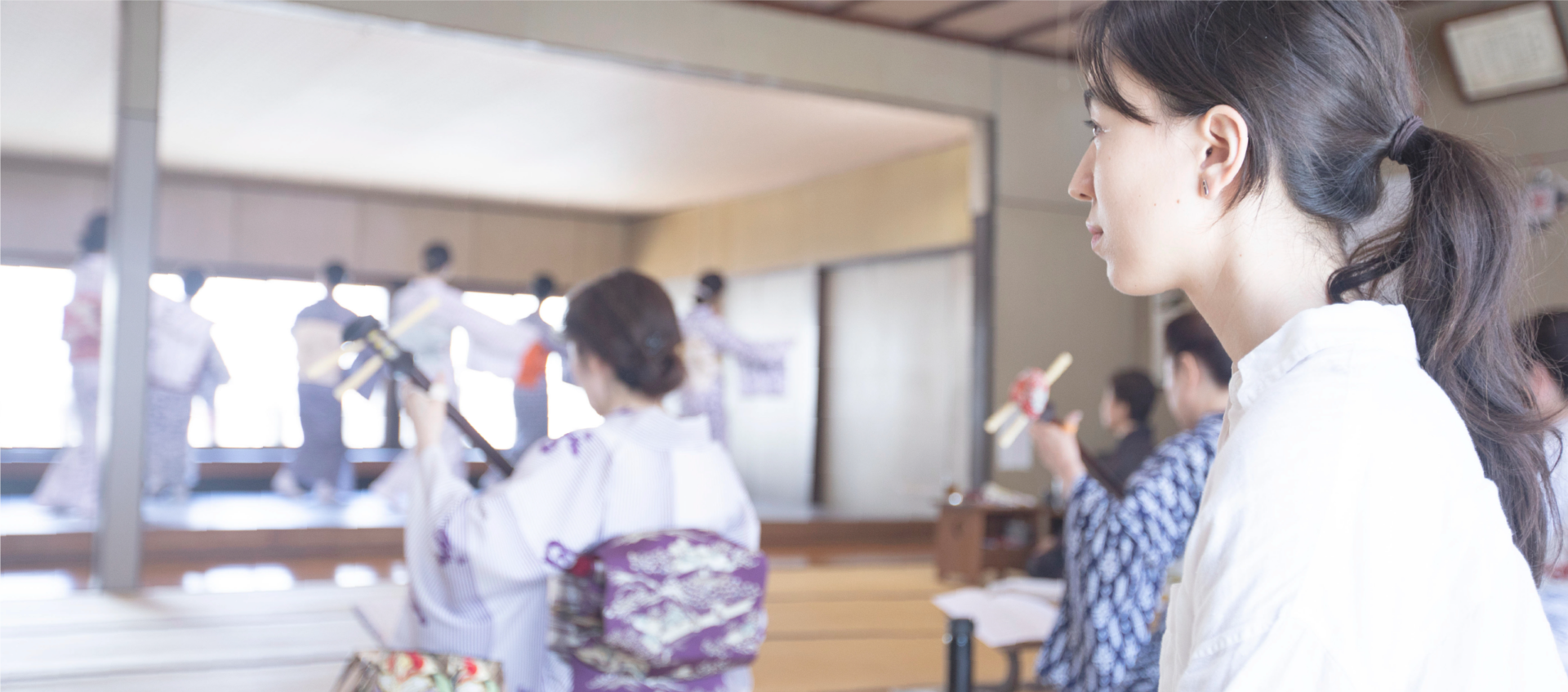
In a traditional performance, there are tachikata, who perform the dance, and jikata, who play the shamisen and sing the nagauta (traditional Japanese songs).
Geisha first appeared in Nagasaki during the mid-Edo period. The kenban system acted as an intermediary between the geisha and the ryotei, arranging for geisha to be sent to the dining rooms of ryotei upon request. In these settings, guests can enjoy elegant Japanese dance performances, accompanied by shamisen and nagauta music, while sharing in the experience with the geisha. By engaging in conversation and being served drinks, guests can immerse themselves in Japan’s deeply rooted culture of attentiveness and hospitality.
At its peak, the number of geisha exceeded 100, but today there are only about 10. To ensure that more people learn about the charm of the geisha, efforts are being made to increase opportunities for them to perform outside of teahouses, including community interactions and tourism events, thus helping to preserve this traditional art form.
During the height of Japan’s economic prosperity, when Nagasaki was at its most vibrant, geisha were often invited to entertain in the dining rooms almost every evening. In these bustling settings, they were required to extend their attentiveness to every guest present, never overlooking a single person. As one saying goes, ‘A geisha only becomes truly accomplished when she retires’, highlighting the deep skill and lifelong dedication required to master the art.
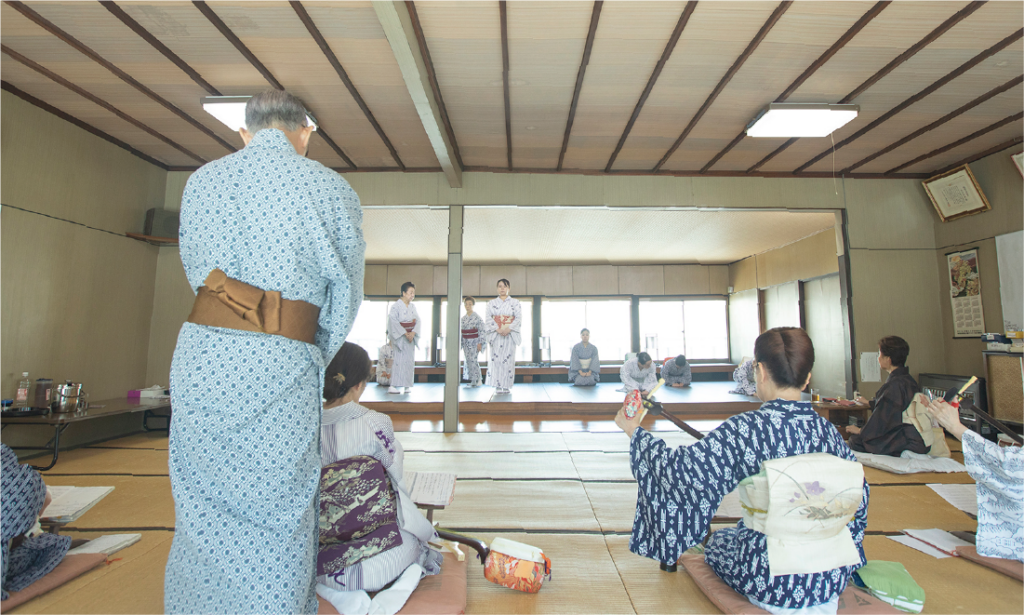
It takes more than six months of practice before one is ready to perform in front of an audience.
With many traditional dances and nagauta pieces to master, daily training is crucial.
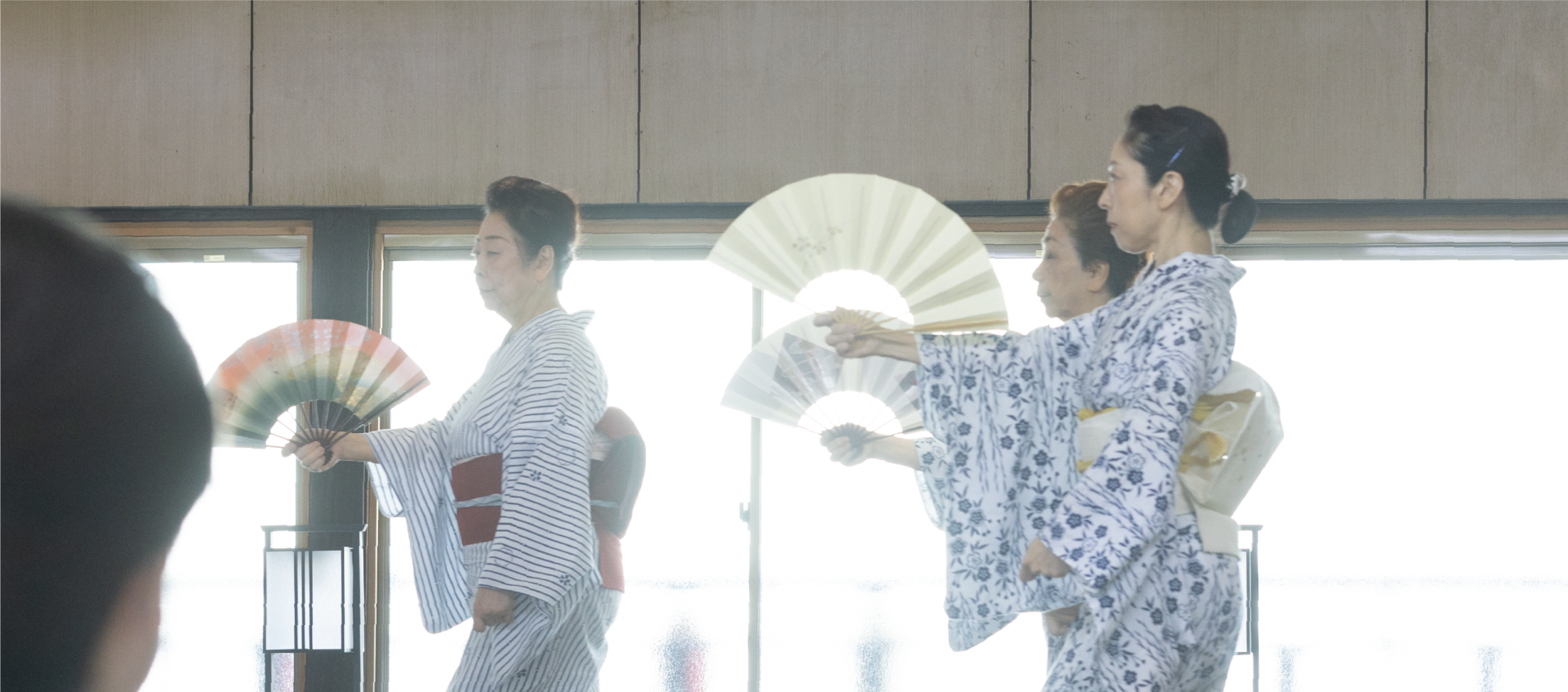

Ryotei Ichiriki
Address: 8-20 Suwamachi, Nagasaki
Hours: Lunch: 11:30 a.m. to 1:30 p.m.; dinner: 5:00 p.m. to 7:30 p.m.
Parking: None

